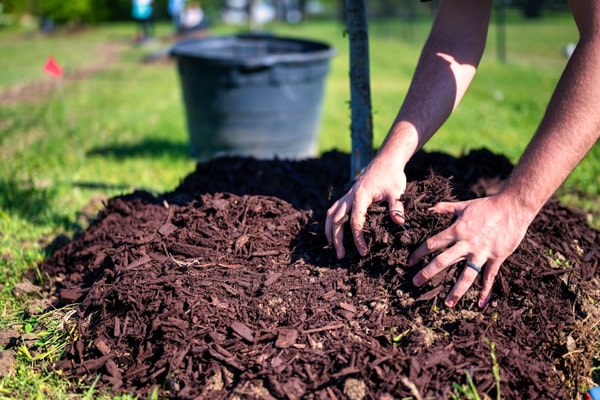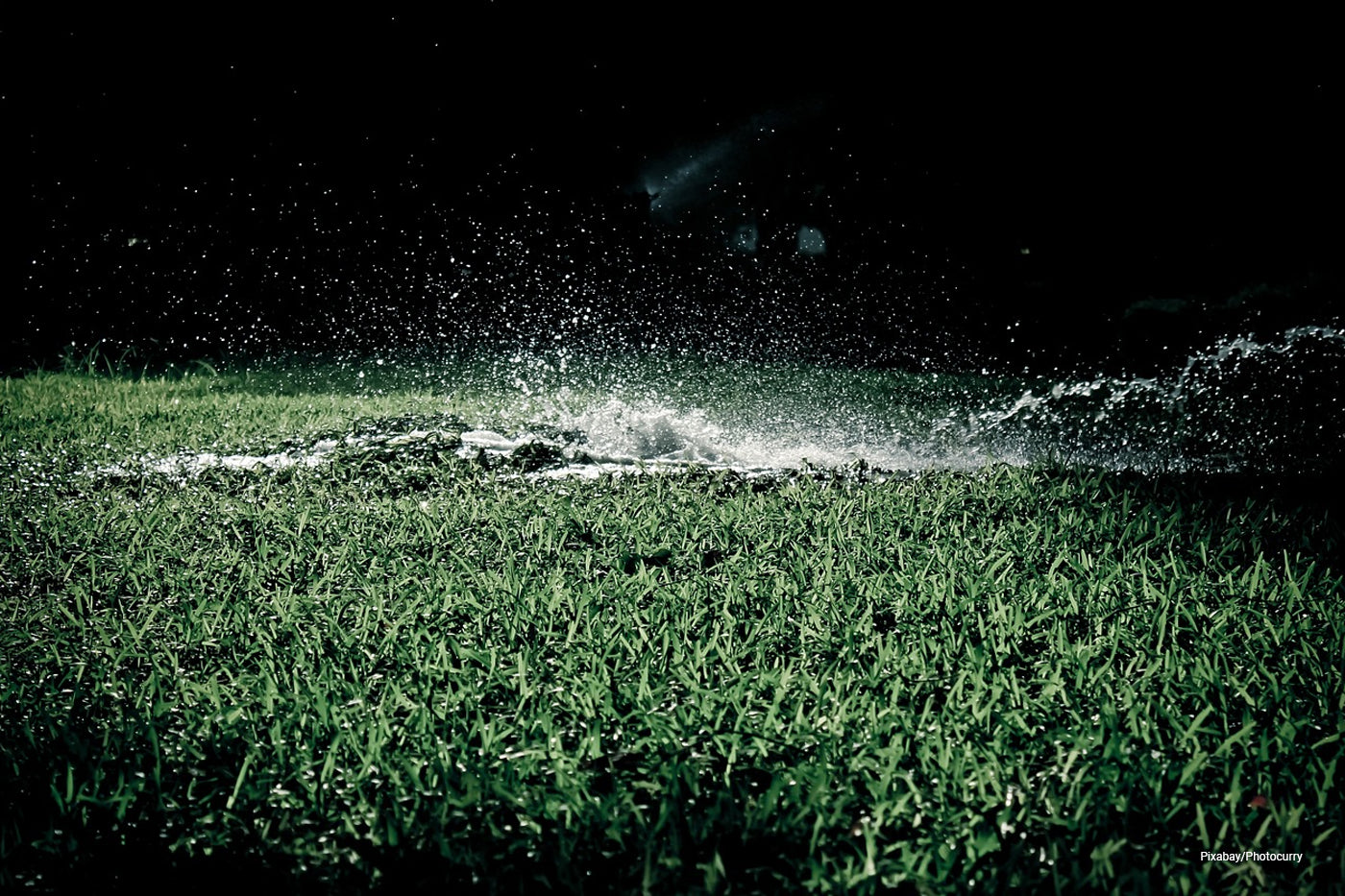Gardening is inherently environmentally friendly but hydrating plants is water intensive. While watering the plants is a part of growing a garden, there are ways to raise healthy, hydrated plants while conserving water at the same time! Whether you're tending a flower garden, an herb garden, container garden, or a vegetable garden, here are ways to use water in the smartest, most eco-friendly ways possible:
Contents []
Re-Use Water
Aquarium water, laundry water, bath water, water used for washing vegetables or water used for washing the dishes, any of these water wastes can be reused for the garden. Pond or aquarium water, in particular, is surprisingly rich in nutrients plant need to grow! Gray water from bath water or laundry water is fine to use to hydrate the plants as long as you do not use chemical-laden cleaning products that are high in sodium or borax.
Plant Native Plants

How are native plants different from exotic plants and what is the reason why native plants are more water efficient than the latter? Native plants already thrive in your zone so these plant varieties have adapted fully to the local climate. If say, you live somewhere that gets little rain every year; the plants in your local area has adapted to the dry environment. This means they will thrive even with a bit of neglect. Apart from planting native plants, you can also fill your garden with small to moderate-sized hardy plants that thrive in harsh weather conditions such as dessert or tropical plant varieties. We recommend grouping these plants together so when it’s time to water the plants, you can maximize your water consumption and reduce waste.
Use an Automatic Rain-Shutoff Mechanism
You can get an automatic rain-shut off device at your nearest hardware store or online. This device allows you to control the amount of rain that falls into your irrigation system, protecting your yard and garden from over-watering. This device is also used to save enough water for future watering. An automatic rain-shutoff mechanism is optimized for most irrigation systems so it can be integrated into your system with ease. However, we recommend having the device installed professionally for best results.
Patch Up All Leaks
Did you know that a leaky hose or outdoor faucet wastes more than 6,000 gallons of water per year? Unfortunately, leaks are a common problem for most homeowners and if the case is true to you, you have to be proactive in terms of repairing these leaks to prevent water wastage. From your outdoor faucet to your garden hose, patch up all leaky tools in the garden and/or yard to save more water. No need for professional help unless the issue is severe.
Sometimes a little elbow grease is all you need to patch up a variety of leaks. It helps if you do your own maintenance checks every week to avoid dealing with the same issue again.
Collect Rainwater

This is perhaps the easiest, most convenient way of collecting water for the garden. You can use a barrel, a rain barrel, or any large container made from food-grade plastic to collect and store rainwater. Just channel the water that rushes to your gutter system into your choice of container via the downspouts and that’s it. You want to make sure to set the container in a spot that’s nearest to the garden otherwise, we recommend installing a spigot so you can disperse the collected rainwater easily. Once the container is filled with rainwater, cover the barrel and you’re done.
Regular Garden Maintenance
Who knew regular garden maintenance is key to conserving more water? That’s right, spending more time cleaning the garden, removing invading plants, unwanted garden debris, and generally keeping your garden in shape is the best way to optimize your water consumption. When your garden is free from invading plant species, your crops will require less water. Clearing unwanted garden debris allows water to seep deeply into the soil, hydrating your plants efficiently with less waste.
Mulching

Covering the soil with a thick layer of compost or mulching materials is one way to conserve water. About 70% of water evaporates from the ground on a hot day. Mulching helps retain soil moisture, which is important to healthy plant growth. You can improve your soil’s ability to hold more moisture by amending it with organic compost.
Apart from improving your soil’s ability to retain moisture, mulching also suppresses the growth of invading weeds that rob plants of water and vital nutrients from the soil. Before you start mulching, you want to avoid fine mulches that tend to clump together into a water-resistant mess. We recommend using coarse mulch because the materials allow water to seep into the ground. You want to apply the mulch on moist soil and then water regularly to keep the moisture level high.
Use the Right Planters
Different planter materials interact with heat differently, some are quick to heat up and lose moisture, and others are able to retain more moisture. Generally, you want to avoid planting thirsty plants in porous planters. Planters made from porous materials – such as unglazed terracotta pots – tend to lose moisture quickly, which means you have to water more to keep the plants hydrated. Metal planters may be a great idea but these planters heat up quickly especially when set in places that get a lot of sun. Since the material heats up quickly, it loses more water through evaporation.
If you live in a place that gets little rainfall, you can conserve water by using glazed pots. These pots are made from porous materials but the glazing helps retain moisture. Glazed pots combined with high-quality potting mix retain more moisture, perfect for gardens that are exposed to hot, dry environments.
Plant Perennials

The kind of plants you have in your garden have a direct impact on your water consumption. Perennial plants consume less water compared to annual plants because their roots grow much deeper into the soil. Plants with shallow root systems, like annual plants, require frequent watering while perennials are able to access moisture deeper into the soil thanks to their more established root systems.
When planting different plant varieties, it is also worth considering the season. This way, you can give new plants more time to develop their root systems. Plants with low water needs, such as slow-growing plants with established roots, plants with narrow leaves, or those with gray or silver foliage, will save you more water in the garden. Generally, plants with larger leaves require more water than plants with smaller or finer foliage.
Add Organic Compost
Increasing organic matter into the soil helps improve the soil’s structure and ability to retain more water. Ideally, you want to build humus into the soil. This goes especially for sandy soil that tends to lose water much more quickly. Just add compost to the soil especially if you live somewhere that’s prone to drought. You can also add organic matter with worm castings such as vegetable scraps, lawn clippings, and leaves to amend the soil.
Conserving water is key to maintaining an environmentally friendly garden. We hope that these tips have inspired you to practice eco-gardening! For more tips and gardening resources, don’t forget to sign up for our newsletter today.



